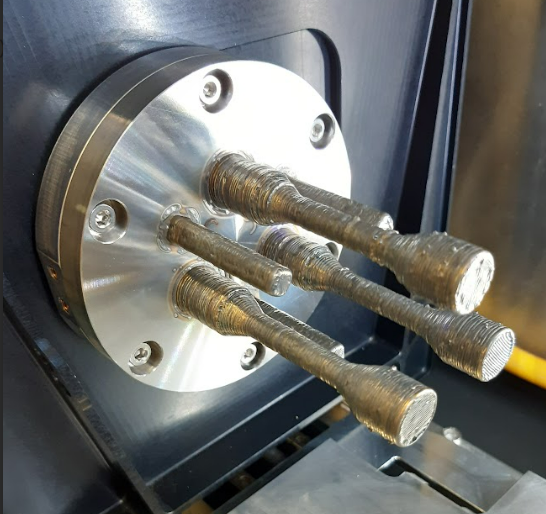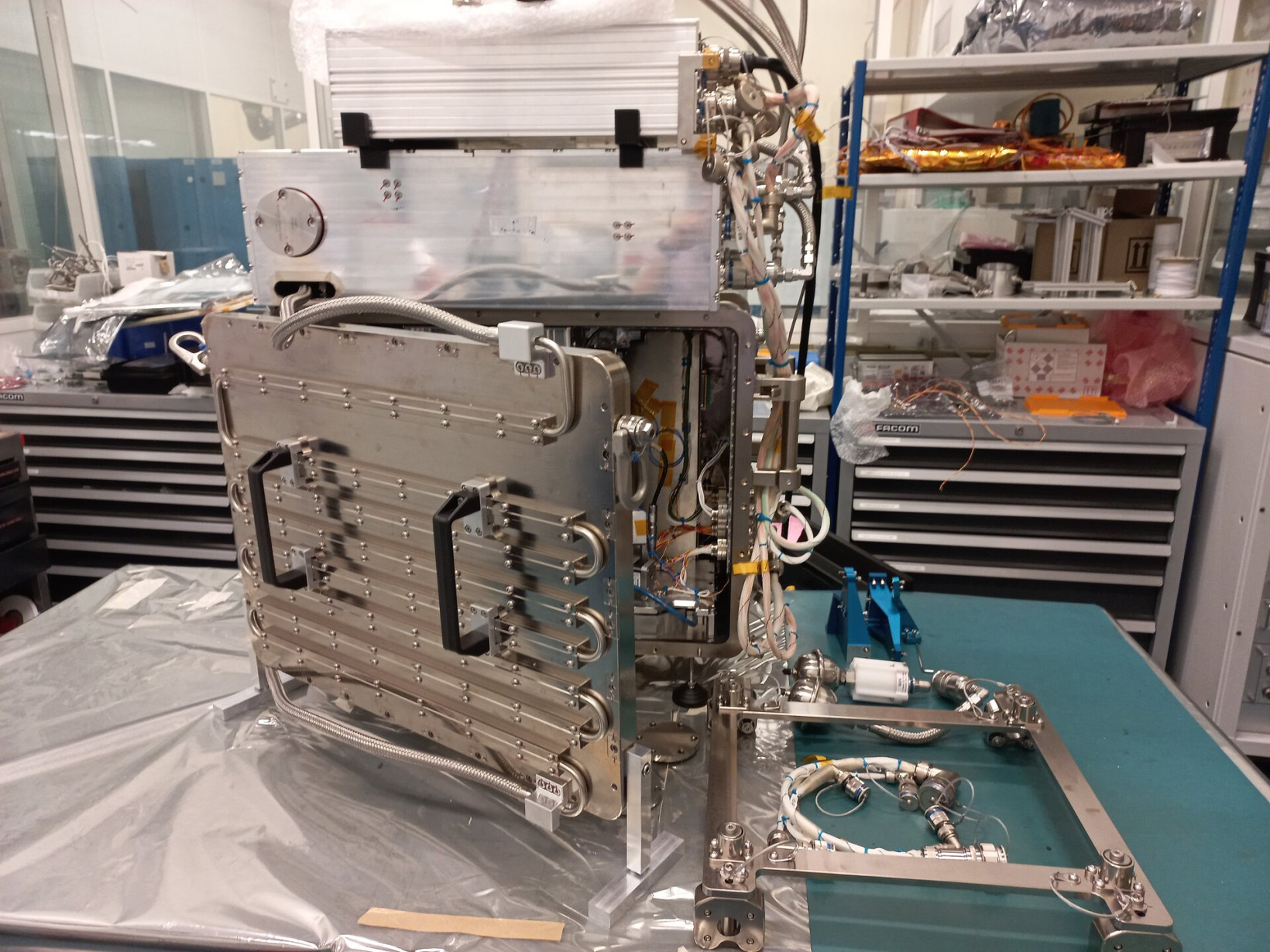#ESA sends world’s first metal 3D printer for space to ISS

Table of Contents
Developed by Airbus, the 180kg printer will be used to repair or manufacture tools, mounting interfaces, and mechanical parts. It can print parts with a volume of nine centimetres high and five centimetres wide, with the process lasting about 40 hours.
Once installed at the ISS, the 3D printer will manufacture four metal samples that will be sent back to Earth for analysis. The ground-based engineering model of the printer will also produce the same specimens.

“In order to evaluate the effects of microgravity, ESA and Danish Technical University will perform mechanical strength and bending tests and microstructural analysis on the parts made in space and compare them to the other specimens,” Sébastien Girault, metal 3D-printer system engineer at Airbus, explained.
In-space manufacturing: the new frontier
In-space manufacturing has emerged as the new frontier both for research and for improved space exploration capabilities.
When it comes to R&D, space’s properties — its microgravity, near-vacuum state, and higher levels of radiation — offer a unique testbed for sectors ranging from semiconductors to pharmaceuticals.
At the same time, the ability to repair or produce parts in space reduces the reliance on supplies sent from Earth and is therefore key to extended exploration and life support in space.
“Increasing the level of maturity and automation of additive manufacturing in space could be a game changer for supporting life beyond Earth,” Gwenaëlle Aridon, Airbus Space Assembly lead engineer, said.
“Thinking beyond the ISS, the applications could be amazing. Imagine a metal printer using transformed regolith [moondust] or recycled materials to build a lunar base!”
The metal age of space
3D printing of plastic parts aboard the ISS has been taking place since 2014. But printing metal in space comes with a set of challenges.
The first one is size. This required shrinking the printer to the dimensions of a washing machine; in comparison, ground-based printers occupy a minimum of 10 square metres, according to Girault.

Another challenge is safety. That’s because a metal 3D printer not only operates in higher temperatures, but also requires a powerful laser to melt the metal.
“The melting point of stainless steel is about 1400 °C so the printer operates within a fully sealed box, preventing excess heat or fumes from reaching the crew of the Space Station,” Advenit Makaya, materials engineer at ESA, said.
“And before the print process begins the printer’s internal oxygen atmosphere has to be vented to space, replaced by nitrogen — the hot stainless steel would oxidise if it became exposed to the oxygen.”
If the 3D printer yields successful results, the technology could prove critical to Mars and lunar exploration, while contributing to ESA’s vision for a circular space economy.
If you liked the article, do not forget to share it with your friends. Follow us on Google News too, click on the star and choose us from your favorites.
If you want to read more like this article, you can visit our Technology category.





